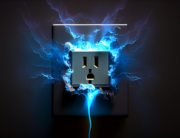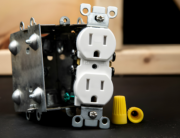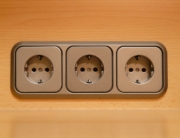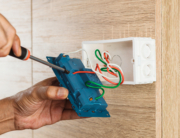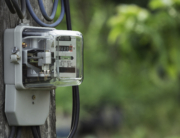Being the owner of a plant is a big responsibility and it is very important to keep your equipment in working condition. You need to remember that all your maintenance must be planned in an efficient way for both economic and energy efficiency.
Usually, when you choose to partake in your routine maintenance, it may cause a delay in your production resulting in loss of income. All safety electrical equipment that is used on a continuous basis will require a lot more maintenance than your equipment that is used rarely, although they will still need to be maintained.
Even though you may maintain your equipment on a regular basis there will be times that your equipment could break. You will then need to take all costs into consideration before deciding whether you should repair the equipment or to just replace it completely.
To help you decide, you should analyze what you have already spent on the equipment as well as what it will cost to maintain it in the future. Once you have done that you should compare it to what it would cost you to acquire newer equipment that may cost less to maintain.
You could also hire a specialist that could create a breakdown of important factors such as the probability of the following:
- Repairs
- Overhauls
- Breakdowns
- Replacement of machinery
To run a successful plant you will also need to keep the following important steps in mind
-
Simple and standard equipment
It isn’t always necessary to buy the most sophisticated equipment to ensure that you have the best production. It is sometimes easier to simplify your equipment as much as possible in an economic and convenient way. Some standard items will help you to buy and replace the components of your safety electrical materials in the most convenient and economic basis.
-
A system for record keeping
A simple and efficient way to keep record of your equipment and the frequency of your maintenance is by keeping an up to date card system or a log book to keep track. This is an easier way to keep track of what equipment will require more attention and at what intervals your plant will need to be maintained. This will also help prevent future breakdowns in your plant.
-
Maintenance planning
You will need to discuss the frequency of your maintenance with an operation manager to ensure that it will not stall production inappropriately. It will need to be done with precise planning and organization. All of your planning needs to be done before implementing any maintenance.
-
Establishing a routine maintenance that is cost efficient
There are many safety inspections that will need to be carried out at regular intervals and you need to make sure that the maintenance schedule will be both practical as well as economic. It isn’t always easy to avoid delays when carrying out routine safety electrical materials maintenance. It is also very important to prioritize your equipment for maintenance. Equipment that can be repaired at any time is those that cause no delays in production. In some plants, it is only necessary for about 25% of the equipment to be maintained according to a schedule per annum. You will, therefore, need to make it a priority to maintain a strict and efficient schedule to ensure that your plant will run at a productive rate.
-
Upgrading your equipment
One of the simplest ways to be efficient is by changing certain equipment. To be energy efficient you could:
- Change lamps to energy saving lamps
- Use electronic systems
- Make use of high-efficiency motors for machinery that may require heavy duty work
- You could also change your fans and pumps to be more energy efficient by installing VSD’s for more efficient flow control.
Remember to make sure that you take into account the cost of replacing machinery as well as if they will have an appropriate and efficient machine life and that it will not negatively impact your plant.
How do you benefit from planned maintenance?
When you have a set program for planned maintenance, you need to make sure that you have also made room for any emergency maintenance that may take place. By planning for maintenance you can ensure that you not only have the funds available but that your plant won’t be interrupted unnecessarily.

D&F Liquidators has been serving the electrical construction materials needs for more than 30 years. It is an international clearinghouse, with 180,000 square facility located in Hayward, California. It keeps an extensive inventory of electrical connectors, conduit fitting, circuit breakers, junction boxes, wire cable, safety switches etc. It procures its electrical materials supplies from top-notch companies across the globe. The Company also keeps an extensive inventory of electrical explosion proof products and modern electrical lighting solutions. As it buys materials in bulk, D&F is in a unique position to offer a competitive pricing structure. Besides, it is able to meet the most discerning demands and ship material on the same day.

